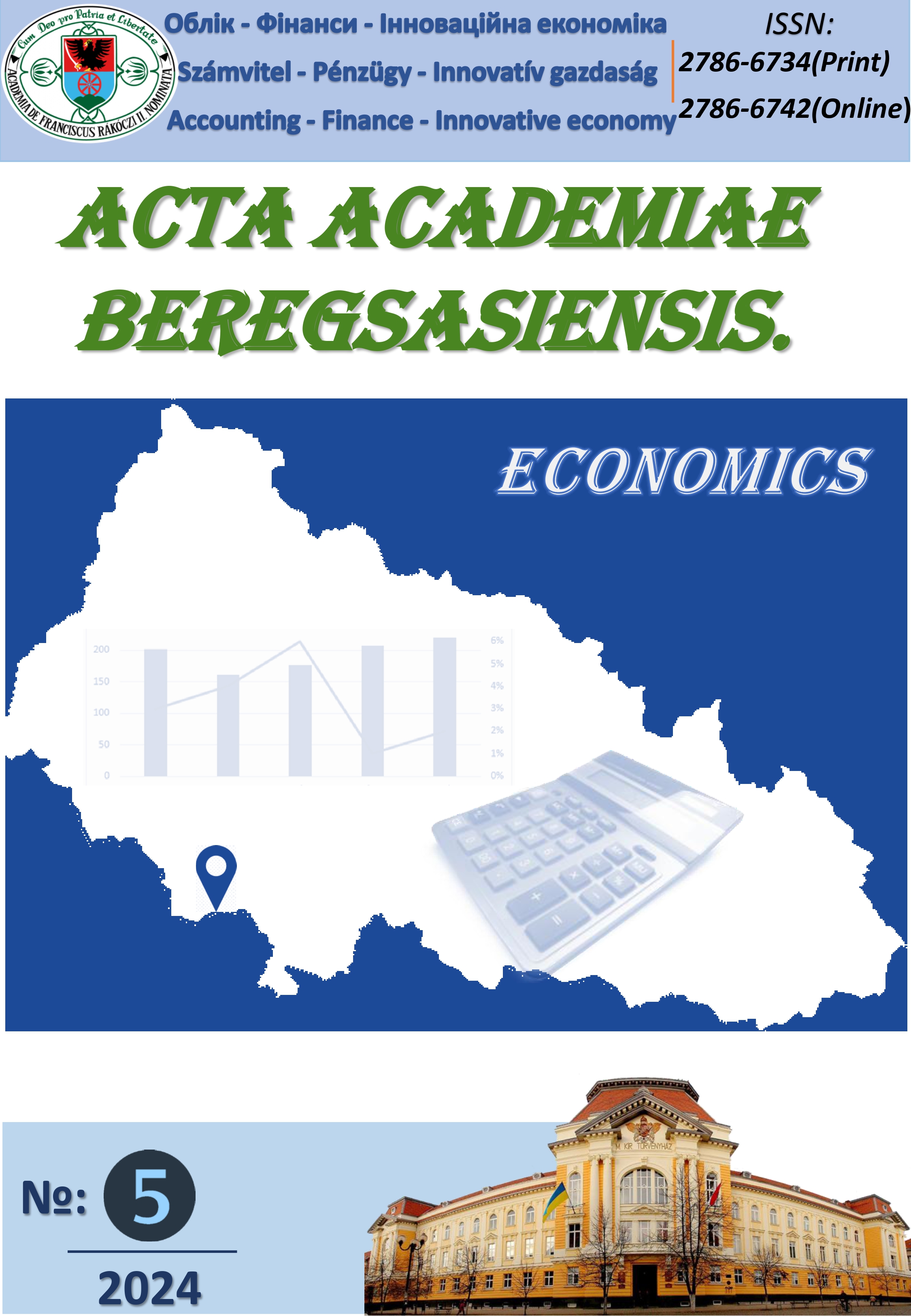Strategic Infrastructure Transformation: Revolutionizing Financial Sector Management for Enhanced Success
DOI:
https://doi.org/10.58423/2786-6742/2024-5-323-332Keywords:
infrastructure, strategic transformation, financial sector, management, revolutionizing, enhanced successAbstract
This article explores the transformative landscape of strategic infrastructure within the financial sector, focusing on the dynamic interplay between technology integration and human capital in shaping operational efficiency. The introduction outlines the problem statement, emphasizing the growing significance of strategic infrastructure in financial management. Leveraging an advanced econometric model, our research unveils crucial insights into the predictors of operational efficiency.
The results showcase the substantial influence of both technology integration and human capital on operational efficiency, with coefficients of 0.89 and 1.15, respectively. These findings underscore the critical role that technological advancements and investment in human capital play in optimizing operational performance within financial institutions. The model's high Multiple R-squared (0.82) and Adjusted R-squared (0.80) values affirm its effectiveness in explaining approximately 80% of the variability in Operational Efficiency. Furthermore, the overall significance of the model is established by a robust F-statistic (36.45) and a low Prob (F-statistic) value (< 0.001). The model's goodness of fit is supported by lower Akaike information criterion (AIC) and Bayesian information criterion (BIC) values (456.78 and 468.12, respectively), striking a balance between accuracy and complexity.
The discussion of results delves into the practical implications for decision-makers in financial institutions, emphasizing the need for a harmonious integration of technology and human capital strategies. These insights provide a valuable foundation for enhancing strategic management practices within the financial sector. In conclusion, this article contributes to the scientific novelty by employing an innovative blend of theoretical frameworks, empirical data, and advanced econometric modeling. The synthesized results offer a clear and logical presentation of influential factors, model effectiveness, and practical implications. As the financial landscape continues to evolve, the implications of this research extend beyond the current study, opening avenues for future investigations into the nuanced dynamics of strategic infrastructure transformation.
References
National Bank of Ukraine. (2022). Strategy of the Ukrainian financial sector development until 2025. https://bank.gov.ua/admin_uploads/article/Strategy_FS_2025_eng.pdf
Gottschalk, R., Sampath, P. G. (2021). Infrastructure for Structural Transformation: A Comebackof Planning? Journal of Infrastructure Development, 13(1), 53-64. https://doi.org/10.1177/09749306211023667 DOI: https://doi.org/10.1177/09749306211023667
Collomb, A., Sok, K. (2023). Blockchain/distributed ledger technology (DLT): What impact on the financial sector? Communications & Strategies. https://search.proquest.com/docview/1841718518?accountid=10007
Gong, C. (2020). An Overview of Blockchain Technology: Architecture, Consensus, and Future Trends (pp. 1-5).
Freuden, D. (2023). Hybrid blockchains: The best of both public and private. https://bravenewcoin.com/insights/hybrid-blockchains-the-best-of-both-publicand-private
Guo, Y., Liang, C. (2023). Blockchain application and outlook in the banking industry. Financial Innovation. https://doi.org/10.1186/s40854-016-0034-9 DOI: https://doi.org/10.1186/s40854-016-0034-9
Hassani, H., Huang, X., Silva, E. (2018). Banking with blockchained big data. Journal of Management Analytics, 5(4), 243-250. DOI: https://doi.org/10.1080/23270012.2018.1528900
Higginson, M., Hilal, A., Yugac, E. (2019). Blockchain and retail banking: Making the connection. https://www.mckinsey.com/industries/financial-services/our-insights/blockchain-and-retail-banking-making-the-connection
Khatri, Y. (2023). Over 50 Banks, Firm's trial Trade Finance App built with R3's Corda Blockchain. https://www.coindesk.com/over-50-banks-firms-trial-trade-finance-appbuilt-with-r3s-corda-blockchain
Maurer, T., Levite, A., Perkovich, G. (2023). Toward a global norm against manipulating the integrity of financial data. Economics Discussion Papers, Kiel Institute for the World Economy, Kiel, Germany. https://www.econstor.eu/bitstream/10419/162579/1/890955921.pdf
Guley, A., Koldovskyi, A. (2023). Digital Currencies of Central Banks (CBDC): Advantages and Disadvantages. Financial Markets, Institutions and Risks, 7(4), 54-66. https://doi.org/10.61093/fmir.7(4).54-66.2023 DOI: https://doi.org/10.61093/fmir.7(4).54-66.2023
Koldovskyi, A. (2023a). Impact on the market capitalization of blockchain-based cryptocurrencies. Collection of scientific papers DUIT. Series "Economics and Management", 2023. Bun. 53. DOI: 10.32703/2664-2964-2023-53-82-90. DOI: https://doi.org/10.32703/2664-2964-2023-53-82-90
Koldovskyi, A. (2023b). The effect of innovation resource management and bank competition output in Ukraine. Global Scientific and Academic Research Journal of Economics, Business and Management. PP. 23-30. DOI: https://doi.org/10.57111/devt/2.2024.25
Downloads
Published
Issue
Section
License
Copyright (c) 2024 Artem Koldovskiy

This work is licensed under a Creative Commons Attribution-NonCommercial 4.0 International License.
Authors retain copyright and grant the journal right of first publication with the work simultaneously licensed under a Creative Commons CC BY-NC License.


